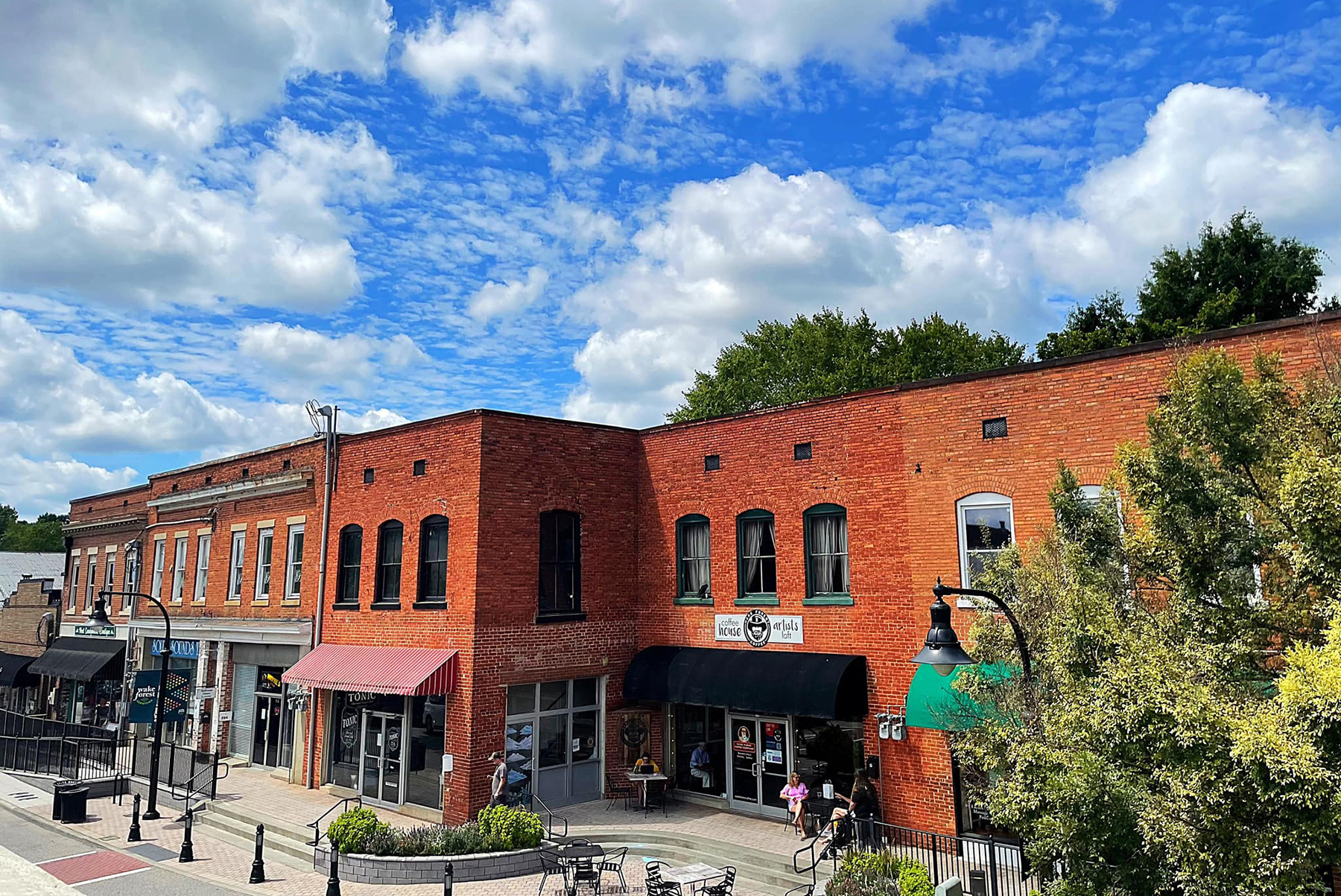Wake Forest's Thriving Downtown
Where The Past Is Prologue

Ask just about anyone living in Wake Forest about what attracted them here, and chances are good, they’ll start with our unique, engaging downtown district. As an inviting destination for businesses and people, Downtown Wake Forest is the nucleus of our community and economy. It not only showcases our town’s rich past but allows for a peek into our future. A walk down South White Street, for example, offers a glimpse into our legacy as a college town, tourism stopover, merchant hub, and entertainment center. What’s even more special is that all these attractions still exist today – and are poised for even more progress ahead.
Woven throughout our economic history is the development – and later departure – of Wake Forest College. The school’s relocation to Winston-Salem in the 1950s was a wake-up call for town leaders to seek and sustain innovative ideas for creating a more diverse economic base. That ethos remains with us, exemplified in our business and political leaders. Organizations, including the Town, the Wake Forest Chamber of Commerce, and the Wake Forest Business & Industry Partnership, place a high priority on business attraction and job growth across Downtown.
The presence of Southeastern Baptist Theological Seminary keeps Wake Forest’s college town vibe palpable. With its approximately 4,500 students, the Seminary’s significant presence provides ballast for our local economy and workforce, and its community-minded leaders are highly engaged in our strategic economic development. These partnerships are stronger and more productive than ever.
Exciting news came late last year that more than a billion dollars in federal funds will be coming to northern Wake County to restore the once-vital stretch of railroad between downtown Raleigh and Wake Forest. The link will connect our town to Amtrak’s popular Piedmont service, which runs three times a day between Uptown Charlotte and Raleigh’s Warehouse District. The move, which is now being executed by the North Carolina Department of Transportation in partnership with Wake Forest leaders, will modernize the once-vital rail corridor between North Carolina and Washington, DC, for both passenger and industrial train traffic after decades of dormancy. Mayor Vivian Jones and other advocates, including this writer, are strongly supporting a return of the train depot to its former location on S. White Street, significantly opening new commercial and tourism development opportunities in the heart of Downtown.
Our Downtown is blessed to have visionary private leaders working together for all the right reasons. Local businessman Bob Johnson, for instance, played a catalytic role in transforming the once-vacant warehouse at 525 S. White Street into The Loading Dock Wake Forest, a hive of entrepreneurial, co-working, and community activity. He is also presently at work stabilizing the iconic Wilkinson Building, which dates to 1899, to expand its ability to serve local businesses. A few steps away, Jacob Anderson, another prominent Wake Forest business leader, is transforming the former Chevrolet dealership on Wait Avenue into a 16,000+ sq.ft. food hall that will provide an outpost for food and beverage entrepreneurs from around the region. This fall, Atlas Stark will complete its adaptive reuse efforts at the former Welsh Warehouse at 535 S. White Street, which will house food and beverage businesses, a fitness franchise, and a special-needs healthcare services center.
Our vibrant downtown business scene accommodates transplanted entrepreneurs and locals with deep roots alike. This reflects the Town’s overall population, which is an eclectic tapestry of recent arrivals from around the globe alongside longtime residents who trace their family histories back to our community’s beginnings. Everyone is treated with the same respect, hospitality, and warmth, which is – sadly – not the case in every Southern small town.
Energy for Wake Forest’s downtown is also created through a busy calendar of community events and local entertainment venues. From late spring to early fall, the Town hosts Friday Night on White, a monthly street festival featuring live music, local foods, and lots of family-friendly fun. Two breweries, White Street and Norse, both cultivate a craft beer scene unique to Downtown. Meanwhile, our Wake Forest Renaissance Centre, as well as the Firebox Theatre Company (FTC), produce live dramatic performances that are highly professional in quality while being accessible to diverse audiences from across our community and beyond. FTC’s productions are hosted in The Graham, an intimate space that doubles as a venue for a myriad of business and other private events.
Tremendous things are happening Downtown, and they ripple substantial economic and community benefits across northern Wake County and neighboring municipalities. But none of this happens by accident: Downtown Wake Forest is thriving because, across the decades, the Town, civic-minded residents, and businesses have come together in collaborations and partnerships on a truly unique place they love and eagerly invest in. It’s their enduring commitment that sets Wake Forest apart.
Jason Cannon
President of Wake Forest Business & Industry Partnership, a non-profit organization that promotes Wake Forest as a destination for business and industry through economic development activities that expand the tax base, increase job opportunities, and foster positive economic impact on the community.

